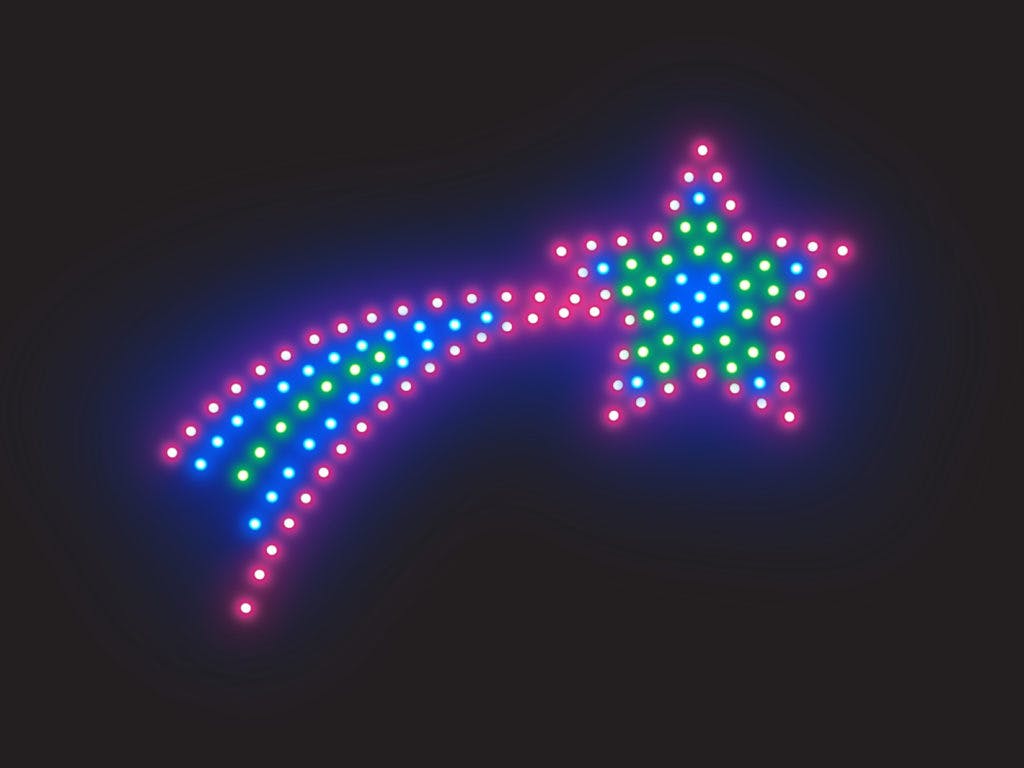LED Lights Not Showing Blue Lights
When you buy through our links, we may earn an affiliate commission.
LED strips let people express their creativity while still being simple to put up and customize. However, they are vulnerable to damage.
Here are ways to check LED lights not showing their blue light:
- Check the contact points of the LED strip
- Check for low voltage input or drained batteries
- Check that the LED strip length is not too long
- Check for any damaged sections.
If your LED lights still don’t work, they might be faulty, so contact customer support.
Keep reading to learn more about troubleshooting LED lights if they’re not showing blue light.
LED Lights Not Showing Blue Lights
For many individuals, LED lights are less intimidating than other options because their installation is straightforward and usually a plug-in operation.
Unfortunately, even LED lights have their issues.
Simple troubleshooting can easily fix LED lighting issues. If that doesn’t work, you can simply contact customer support.
Try these steps to troubleshoot your LED lights:
- Examine the LED strip’s contact points for any damage. If detected, try to fix it or consider replacing it.
- Verify the circuit’s voltage throughout. The LED lights will only turn blue if your circuit supplies them with enough voltage.
- Drained batteries may be another cause of this problem. Therefore, purchase new batteries and swap out the old ones.
- Try segmenting a long strip arrangement so your circuit can achieve the ideal voltage.
- Verify that all of the contact points are completely secure. If you find any damaged points, remove them.
After trying these methods, your strip is probably defective if your LED lights still don’t turn blue.
It would be best to contact customer support in this situation. It will be simple to obtain a replacement order if you have a warranty.
Send an email to the support staff outlining your problem, then wait for a reply.
LED Lights Showing Wrong Colors
Sometimes, when you turn on your LED lights, they start showing the wrong colors.
For example, if upon lighting, your lights are showing red instead of blue.
This problem could arise from several different causes.
The erroneous color display, however, does not necessarily spell the end for your LED strip.
Normally, one of these three straightforward techniques can fix this issue.
1. Ensure Everything Is Plugged In Correctly
LED lighting involves a variety of different connections. Each hue will use one red, one green, and one blue wire.
There will also be ground + and – black and white cables and a standard wall outlet power supply.
All these cables have their terminals, and they must be threaded into the proper locations for them to work properly.
- Make sure your RGB strip light’s + black cable is first joined to the +12V outlet.
- Check the alignment of the positive side of the strip with the + side of the connector on the next mission.
- Check for any loose or errant RGB connections.
All terminals in your receiver should be identified, and your RGB wires should be color-coded to reflect their color.
Occasionally customers have complained that their wires or terminals were erroneously labeled.
In this case, you should try out various combinations until you find one that maintains the functionality of your strip.
2. Reset Your LED Lights
Most likely, you’ve been hesitant to perform the traditional factory reset for fear of losing your settings.
However, you have already partially lost your personalized settings if your LEDs aren’t displaying the correct colors.
Usually, if you modify your LED lightingover time, it may develop odd bugs that result in odd behavior, such as your lights choosing their colors.
When you do a factory reset, it’s as if your fiddling never even took place.
So if your LEDs displayed the correct colors when you first configured them, they would also do so after the reset.
There are numerous brands with unique reset protocols.
Most LED strips can be reset by doing the following:
- The majority of strips include a specific reset button located on the receiver.
- For others, you might need to press and hold the power switch.
- You might need to unplug and re-connect the power supply for more complicated gadgets.
If none of these solutions work, searching for the manufacturer’s information online is a good idea to avoid any more guesswork.
3. Replacing the LED Strip or Controller
If the two solutions above don’t work, your LED strip or controller likely has a problem.
Unfortunately, there isn’t an easy way around this, so your best option is to replace either or both.
You might try operating your LED strip using a different controller to address the problem.
However, you will need to replace your LED lights if this doesn’t work.
Conclusion
Minor issues, including LED lights that don’t display blue light, are typical in most LED strips. Many LEDs show this problem.
Simple troubleshooting can generally resolve LED lights not showing a color.
Always ensure the power supply is at its best because the low voltage is the most likely cause of this problem.

